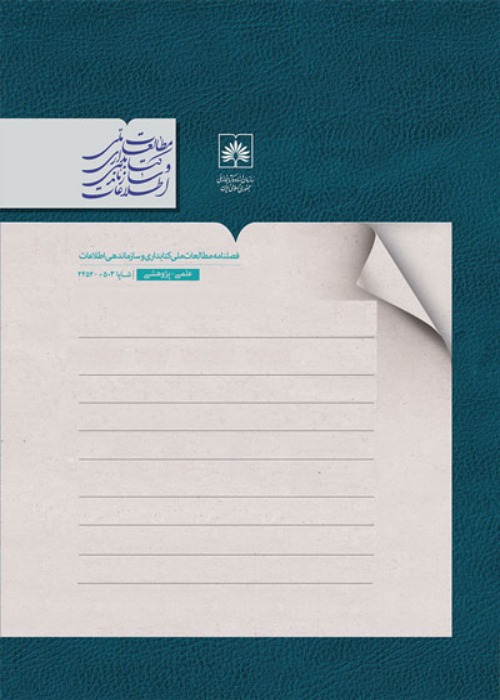Structural and Thematic Diversity of Medical Manuscripts of the Qajar Period Available in Iranian Libraries
Author(s):
Article Type:
Research/Original Article (دارای رتبه معتبر)
Abstract:
Purpose
Medicine can be considered as one of the most important sciences in the history of mankind and its progress is considered as one of the basic components for the formation of civilizations. In Iran, like other societies, this science is of special importance, and in different historical periods, many manuscripts have been written in the field of medicine. Since the Qajar period is one of the most important historical periods in the history of medicine and medicine in Iran, the purpose of this research was to identify and examine the medical manuscripts era in terms of their structure and subject.Methods
This research was done in a library manner and with a descriptive-analytical research method. The statistical population of this research is the medical manuscripts of the Qajar era available in the list of manuscripts of Iranian libraries (Fankha) with a frequency of 3136 manuscripts.The data collection tool was a checklist, and data analysis was done with the help of statistical tables and graphs.Findings
Among the researched manuscripts, 1135 manuscripts with non-repetitive titles were found, 265 of these manuscripts were written by the Qajar era, and the rest are numerous copies of these manuscripts. In terms of content, Pharmacy, and Pharmacology (21.1%), disease recognition (21.1%), and disease treatment (19.3%) are among the most frequently used topics in these manuscripts. The topics of medicinal plants, midwifery, chemical medicine, and travel medicine (each less than 2%) of the prescriptions have been allocated to themselves. In terms of structure, among the 1,135 non-repeated medical manuscript titles in the Qajar era, 49.9 percent of all these manuscripts were in the form of treatises and 41.7 percent of them were with the structure of a book. Also, 2.8 was without determining the structure or without information.Conclusion
Due to the diseases that existed in the Qajar era, such as plague, cholera, typhoid, and smallpox, the prevention and treatment of these diseases have been given much attention by doctors and various treatises and books have been written on this topic. The reason for the arrival of modern pharmaceuticals in Iran and the emergence and spread of non-herbal (chemical) drugs, pharmacy, and pharmacology are widely used topics in this period. The majority of the treatise structure of the medical manuscripts of this course is due to the conciseness and specialization of the treatises, as well as the speed in writing and writing a subject in the form of a treatise. In addition, with the spread of the educational system in this period, the structure of the treatise is more and more interesting due to its suitability for textbooks.The doctors and physicians of this course tried to write manuscripts with the structure of the book in detail and on a general subject with several chapters and as reference books.Keywords:
Language:
Persian
Published:
Librarianship and Informaion Organization Studies, Volume:34 Issue: 2, 2024
Pages:
99 to 126
magiran.com/p2671103
دانلود و مطالعه متن این مقاله با یکی از روشهای زیر امکان پذیر است:
اشتراک شخصی
با عضویت و پرداخت آنلاین حق اشتراک یکساله به مبلغ 1,390,000ريال میتوانید 70 عنوان مطلب دانلود کنید!
اشتراک سازمانی
به کتابخانه دانشگاه یا محل کار خود پیشنهاد کنید تا اشتراک سازمانی این پایگاه را برای دسترسی نامحدود همه کاربران به متن مطالب تهیه نمایند!
توجه!
- حق عضویت دریافتی صرف حمایت از نشریات عضو و نگهداری، تکمیل و توسعه مگیران میشود.
- پرداخت حق اشتراک و دانلود مقالات اجازه بازنشر آن در سایر رسانههای چاپی و دیجیتال را به کاربر نمیدهد.
In order to view content subscription is required
Personal subscription
Subscribe magiran.com for 70 € euros via PayPal and download 70 articles during a year.
Organization subscription
Please contact us to subscribe your university or library for unlimited access!



